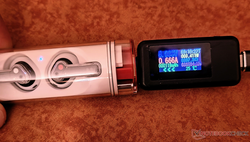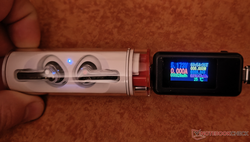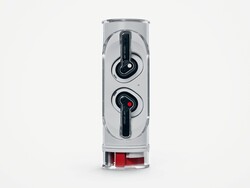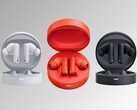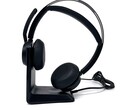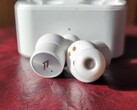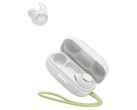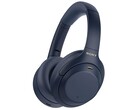Nothing Ear (Stick) TWS headphones review - Transparent sound

Nothing Ear (1) have already been sold more than 560,000 times. Now Nothing brings another transparent technology to the market. However, the Ear (Stick) TWS headphones do not want to be the successor of the Ear (1). As Half-In-Ear or Earbuds, Nothing's newest headphones belong to a different device class. As Nothing Phone (1) users are used to, the Ear (Stick) are fully integrated into Nothing's (still) quite small ecosystem. However, the Earbuds also work flawlessly with other smartphones and tablets.
On the feature side, the Ear (Stick) delivers a bit less than the Ear (1). Wireless charging and active noise canceling are not available here. However, the noise suppression of the microphones during calls is supposed to have been improved considerably.
| Nothing Ear (Stick) | |
|---|---|
| Wearing style | Half-In-Ear/ Earbuds |
| Connectivity | Bluetooth 5.2 |
| Speakers | 12.6 mm driver, dynamic, 20 - 20,000 Hz |
| Audio codecs | SBC, AAC |
| Battery performance Ear-Buds | Phone: 3 hours; Music: 7 hours |
| Battery performance with charging case | Phone calls: 12 hours; music: 29 hours |
| Charging port | USB-C |
| Weight (per ear bud) | 4.4 g |
| Weight (charging case) | 46.3 g |
| Microphones | 3 microphones per earpiece |
| Protection class | IP54 |
| Scope of delivery | Earphones, charging case, documentation, USB charging cable (Type-C to Type-C) |
| Price (MSRP) | 119 Euro |
| Manufacturer page | Nothing Tech |
Scope of delivery - Charging case, headphones and a short cable
Apart from a protective film around the charging case and the two ripcords, the packaging of the Nothing Ear (stick) is plastic-free. The only accessory included is a short charging cable of about 21 cm (approx. 8 inches). This is doubly protected against wear, with a silicone layer and a nylon fabric. Although the round USB-C connectors here certainly fit the design of the Nothing Ear (Stick), the small charging cable is a poor companion in the Nothing ecosystem in our eyes. This is because the cable cannot be plugged into the Nothing Phone (1) if it is wearing the original Nothing protective case. The charging case can only receive energy from the smartphone via cable when its battery is empty. It does not support wireless charging.
Workmanship, ergonomics and design - Nothing is still transparent
Nothing is said to have tested the design of the Ear (Stick) on over 100 different ear types. More than 200 different models were printed via 3D printer in the development process. At least in our ears, the excessive work on the design was worth it. Although the part of the headphones that sit in the ears is not exactly small at 19.9 mm × 15.3 mm × 12 mm, the Earbuds sit comfortably and securely in the ears. When walking, running, and dancing, the fit of the headphones wouldn't loosen. With their 4.4 g, you hardly notice the Ear (stick) even over longer periods of time. Since they do not close the auditory canal, the surrounding environment is perceived as unhindered.
The design of the headphones is strongly reminiscent of the transparent devices from the 90s. You can see details like the antennas or the small chips on the circuit board through the polycarbonate. However, the batteries and speakers are hidden in the white part of the case. The charging case also has a large amount of transparent plastic. However, you can only see design elements here and no technical components.
As in the Ear (1), Nothing has also integrated a fidget toy in the Ear (Stick) charging case. The rotating opening mechanism locks into the closed or open position with a pleasantly quiet click. Again and again, you catch yourself playing with the rotating case cover. The color coding indicates where Earbud belongs in the case: the right earbud with a red dot belongs to the red end of the charging case, which reminds of lipstick.
In terms of workmanship, Nothing does not allow itself any mistakes. The Ear (Stick) headphones have practically no gaps. There is a perfectly fitting and smooth transition at the connection between the individual housing parts. This also increases the wearing comfort. The white plastic has a microtexture, which improves the fit in the ear and at the same time somewhat ensures that sweat does not stick to the Earbuds. However, the case concept has its drawbacks. Dust collects between the rotating cover and the white center part after only a short time. With the best will in the world, you cannot get to it without disassembling the case.
Equipment and operation - IP54, press control and a good companion app
In Nothing OS 1.1.6, all controls for the ear (stick) are integrated. Various settings can be set and the status of the headphones can be queried via the settings. The controls can be accessed via a long press on the Bluetooth icon in the drop-down menu. The charging status of all batteries is also displayed here. The integrated equalizer is admittedly quite simple. Trebles, mids, and basses can be adjusted, but a graphic equalizer is not available.
The key assignment can also be changed in the device details. Press once, twice, and three times as well as press and hold and press and hold twice can distinguish the TWS headphones. Wear detection can also be set here and the low-latency mode can be selected. Without Nothing Phone (1), all settings can still be accessed via the Nothing X app. The app is graphically based on the look of Nothing OS.
Nothing describes the buttons on the speakers as press controls. Here, slight pressure with the grip of tweezers must be applied to the side surfaces of the Earbuds. Operating errors are thus significantly reduced, especially compared to the Ear (1), which are touch-sensitive. Only when holding the earbuds by the stick do we sporadically notice that a button press is registered.
The charging case has a button that activates Google Fast Pair and Microsoft Quick Switch. Thus, the TWS headphones are quickly connected to a device. The silver button fits well into the design of the charging case. However, you have to do without wireless charging with these Bluetooth headphones. They have an IP54 rating, which protects the headphones from dust and splashing water.
Nothing Ear (stick) on Nothing Phone (1)
Voice quality - "Clear Voice" technology works
With three microphones per earbud, the Nothing Ear (Stick) picks up ambient sounds and your own voice. Clear Voice technology detects and removes more than a million different ambient sounds. Making calls in a variety of environments, we put noise suppression to the test, making calls in traffic, at a construction site, and in windy conditions. In none of the cases was the noise perceived by the call partner. The voice quality was also found to be optimal here.
Sound quality - Good even without aptX
With SBC and AAC, the Nothing Ear (Stick) support two not really up-to-date audio codecs. SBC is included in almost all Bluetooth audio devices as the lowest common denominator. However, the lossy codec can be better than its reputation under good conditions. 16-bit sound resolution at up to 48 kHz sample rate can be transmitted by SBC. AAC (Advanced Audio Coding), which is the audio codec of choice at Apple, supports up to 24-bit at 96 kHz. The Amazon Music app indicates exactly which transmission quality is possible with the current playback device. The maximum we determined here is a sound resolution of 24 bits at 48 kHz. This value was achieved with the Nothing Phone (1) as well as with a Google Pixel 6a.
Nothing has made full use of the speakers, which are important for the sound quality. With a diameter of 12.6 mm, the drivers in the slim Earbuds are particularly large. According to Nothing, the membranes are provided with a stabilizing coating and are thus extremely dimensionally stable. In addition, the Bass-Lock technology ensures a full sound. This detects when playing music with the Ear (Stick) a bass loss via the built-in microphones and adjusts the equalizer curve to the optimum level. Thus, the best possible sound spectrum should always arrive at the eardrum, even if part of the sound passes the ear canal.
In combination, the hardware and software, as well as the audio codecs used, ensure a good sound. Once the Ear (stick) has adjusted to the wearer, basses are surprisingly powerful, trebles very clear and the mids punctuated. Even though the integrated equalizer only allows a little freedom, you hardly need this function here. To our ears, the half-in-ear headphones have a sound that can also keep up with many good in-ear headphones. But naturally, the bass is not quite as oppressive as with in-ears.
Battery life - 7 hours of music playback
Nothing specifies the Ear (stick)'s battery life at seven hours for music playback and three hours for calling. If the wireless headphones are charged via the charging case, a total of 29 hours of music playback and 12 hours of telephony should be possible. These values were reproducible in the test. The Earbuds could be recharged more than four times in the charging case until it was drained to one percent battery charge.
When playing an audiobook, the TWS headphones achieved a playback time of just under eight hours. During the course of the day, the Nothing Ear (stick) were loaded with five hours of stand-by in the ear, one hour of telephony, and three hours of music playback. The remaining charge in both earbuds was nine percent.
Within ten minutes, the case on the charger should absorb enough energy for another nine hours of playback. Our measuring device determined an energy consumption of 594 mWh within ten minutes. The Earbuds and the case were fully charged within 55 minutes, whereby the case absorbed 1,647 mWh.
Verdict - Nothing brings back the fun
"Nothing is here to bring back the fun in technology," is the company's motto. The Nothing Ear (stick) fulfill this claim. Without showing off a lot of audio codecs or other advertising features of Bluetooth headphones, the Nothing Ear (stick) can convince in our test. They are comfortable to wear for a long time, deliver a balanced sound and also have a long battery life.
The transparent design is an eye-catcher, just like the Phone (1) and the Ear (1). In addition, there is a good concept for operating the Earbuds. Press control is precise and practical. As long as the headphones are in the ear, operating errors are almost impossible. The selection of Bluetooth headphones is large, but the Nothing Ear (stick) stand out. They show that it doesn't necessarily take the latest audio codecs to deliver good sound.
The Nothing Ear (stick) offer plenty of sound and an impressive design without trying to exhaust all the technical possibilities. They limit themselves to the essentials.
The fact that the headphones do not support wireless charging, unlike the Ear (1), is a bit of a nuisance here. It is also noticeable at the end of the review period that the charging case has a small weakness. Dust collects in the rotating element, which is difficult or impossible to remove. Those who absolutely need codecs like aptX or LC3 can chalk that up negatively to the Ear (stick) as well. Otherwise, the Bluetooth earphones' looks are of course disputable. Technology from Nothing is not to everyone's taste.
Prices and availability
The Nothing Ear (stick) are now available at various retailers in limited quantities. The Bluetooth headphones will also be available in larger quantities from November 4. The recommended retail price is 119 euros.


 Deutsch
Deutsch English
English Español
Español Français
Français Italiano
Italiano Nederlands
Nederlands Polski
Polski Português
Português Русский
Русский Türkçe
Türkçe Svenska
Svenska Chinese
Chinese Magyar
Magyar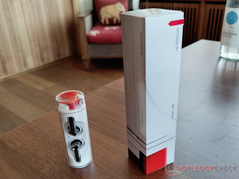
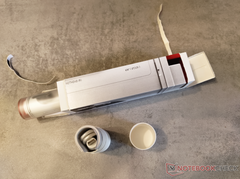
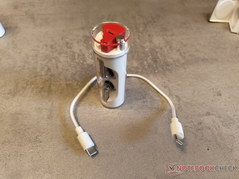
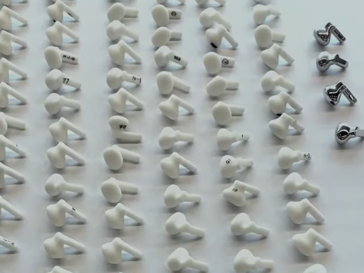
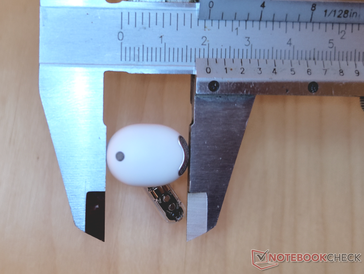
![Nothing Ear (stick) [left] and Ear (1) [right] in comparison](fileadmin/_processed_/1/5/csm_Bild_2022_10_28_014000492_5c3b753fc4.png)
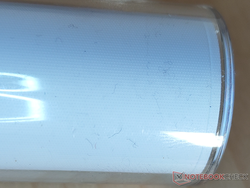
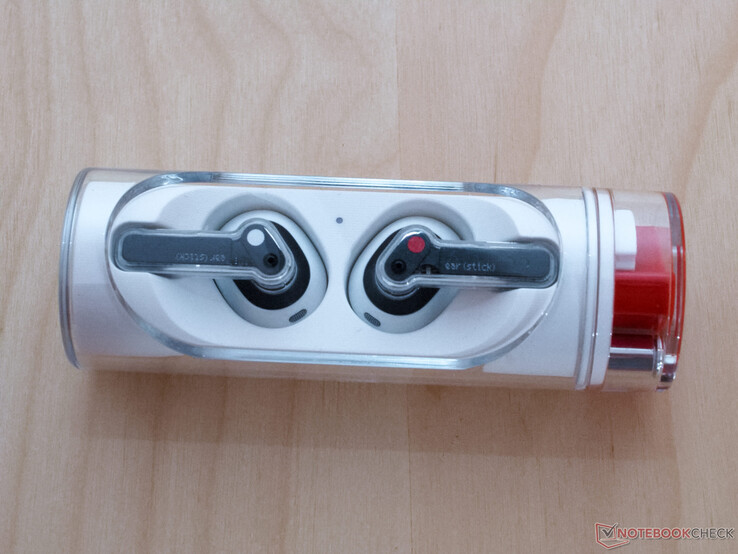




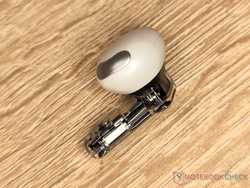
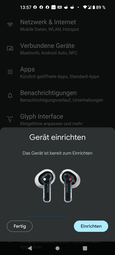


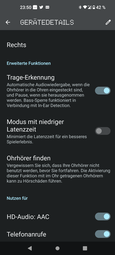

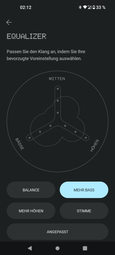
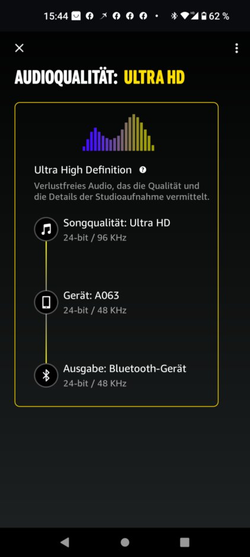
![Speaker membrane from the opened Nothing Ear (Stick) [Source: Youtube]](fileadmin/_processed_/a/0/csm_Nothing_Ear_stick_Stream_5_7_e6ae572169.png)
